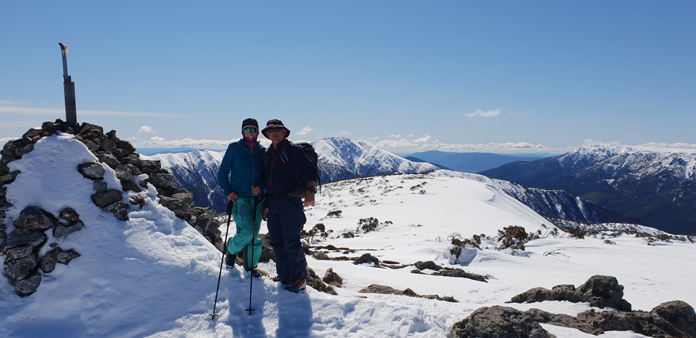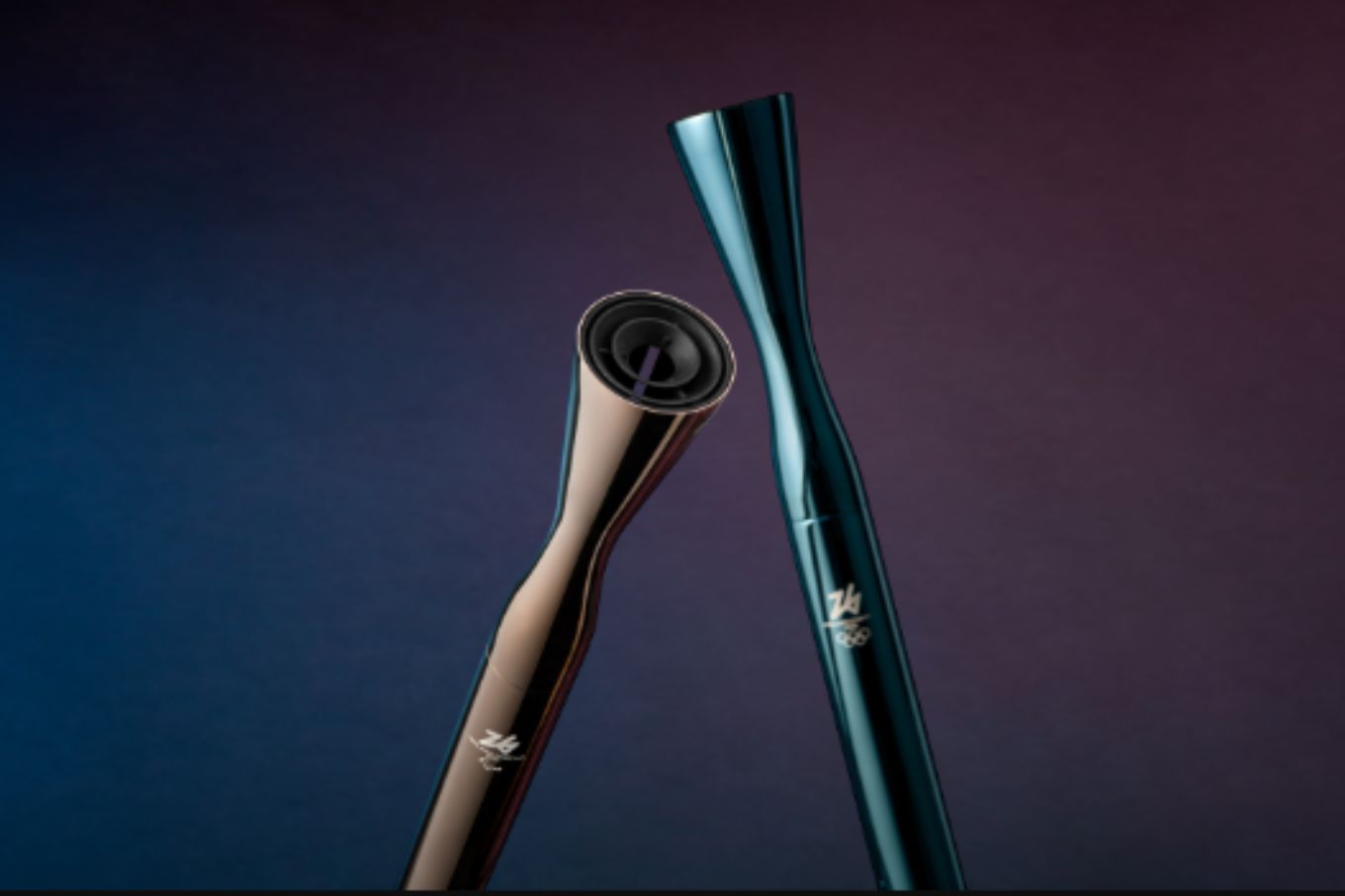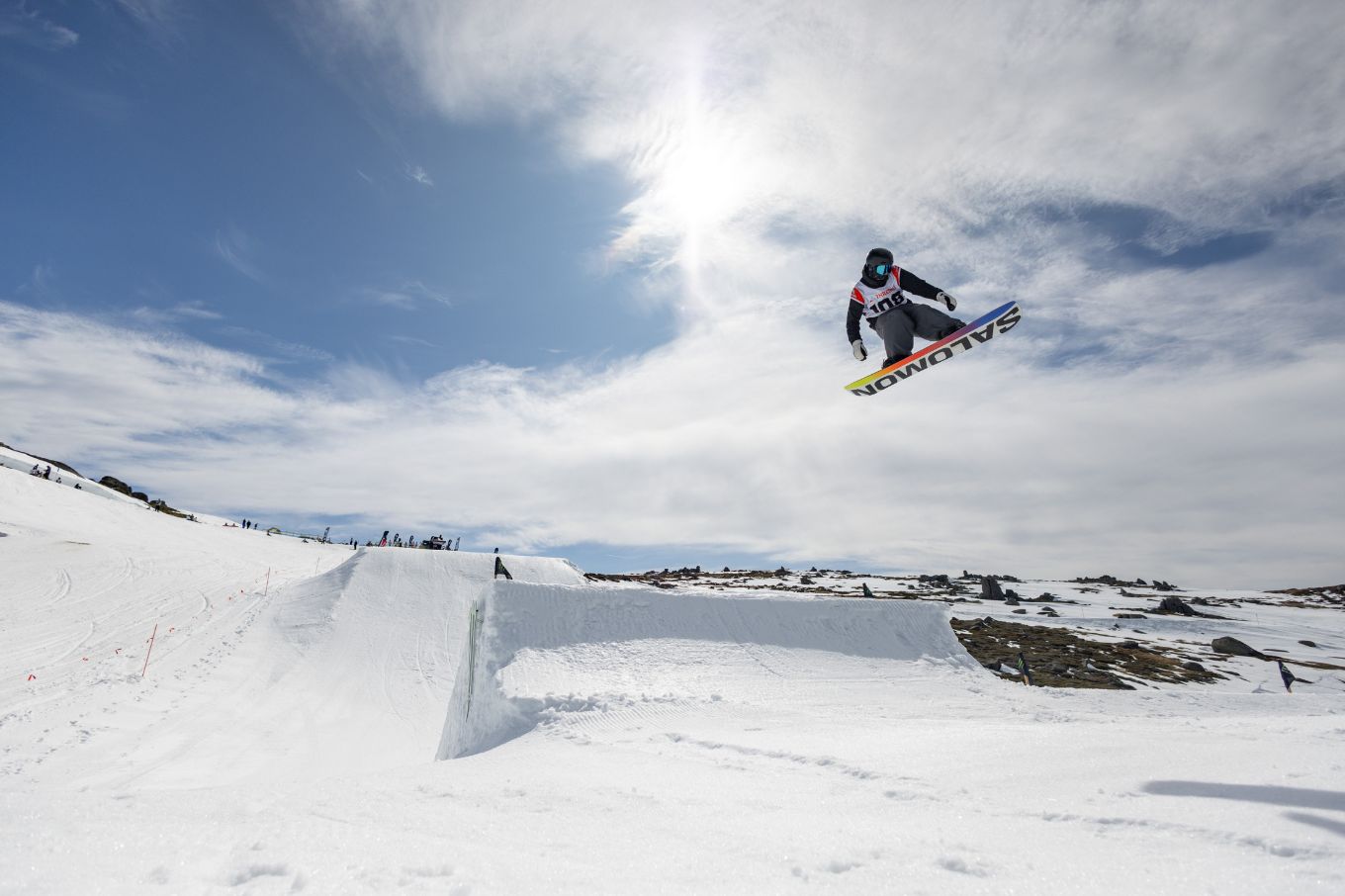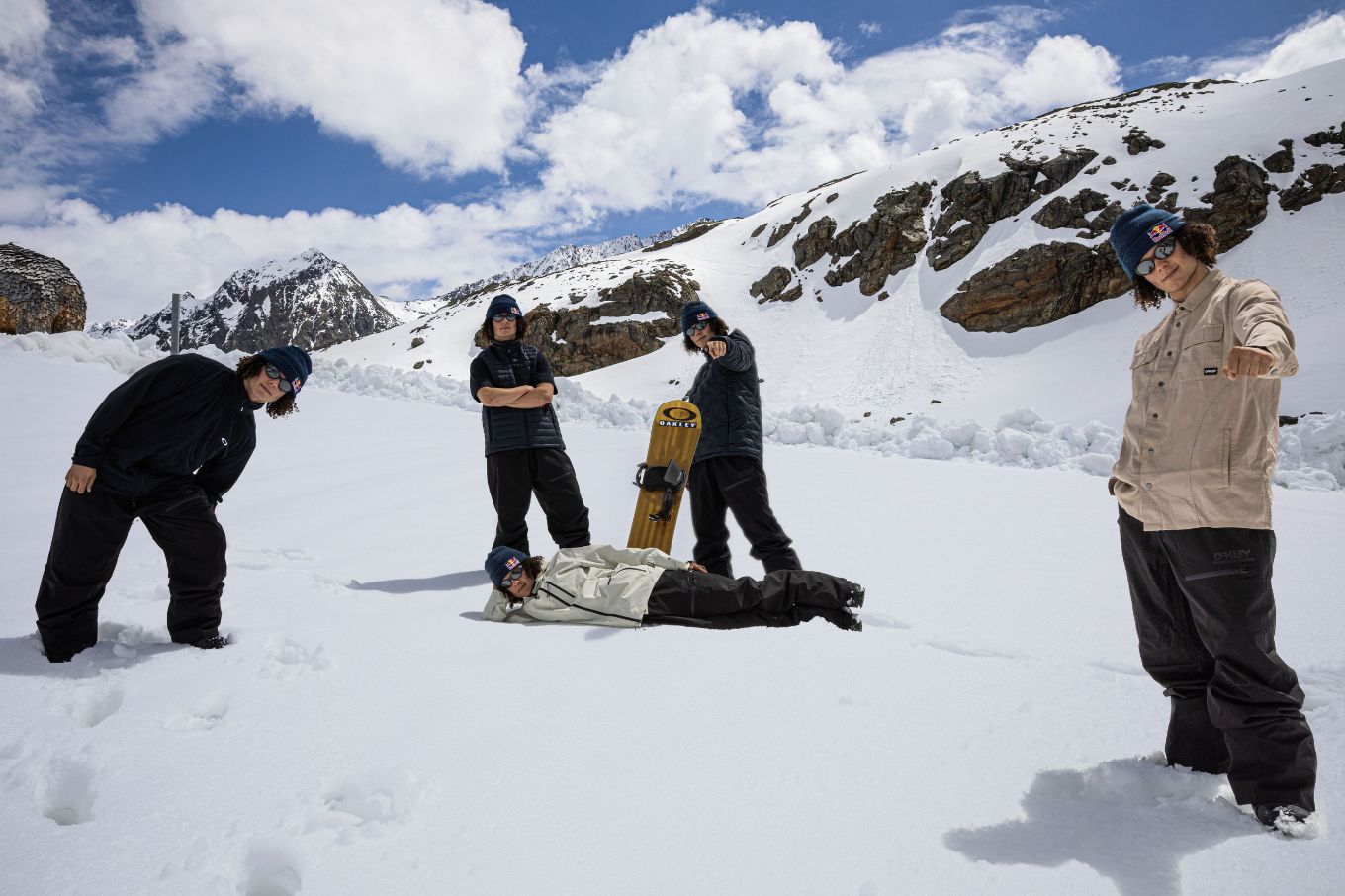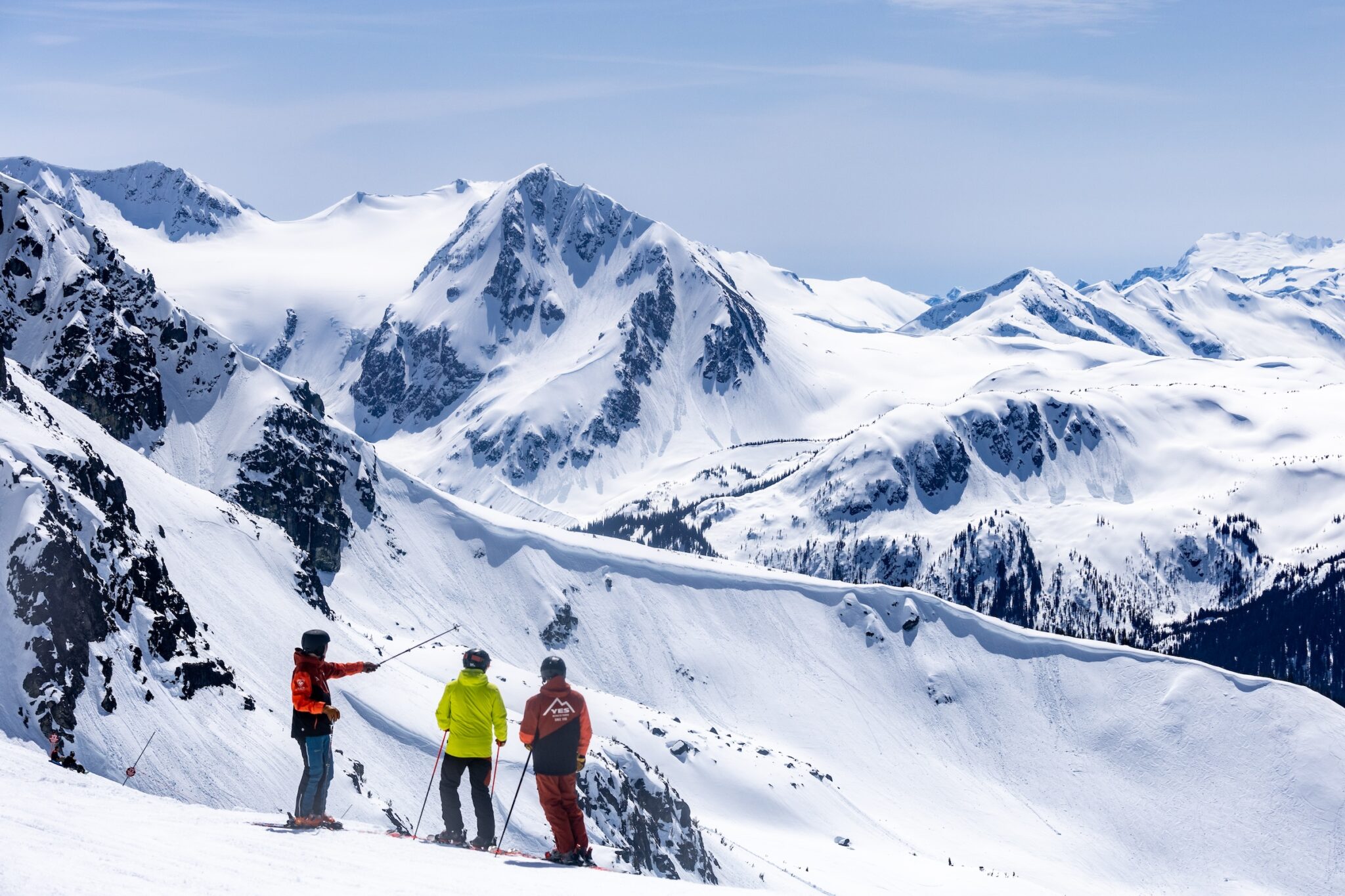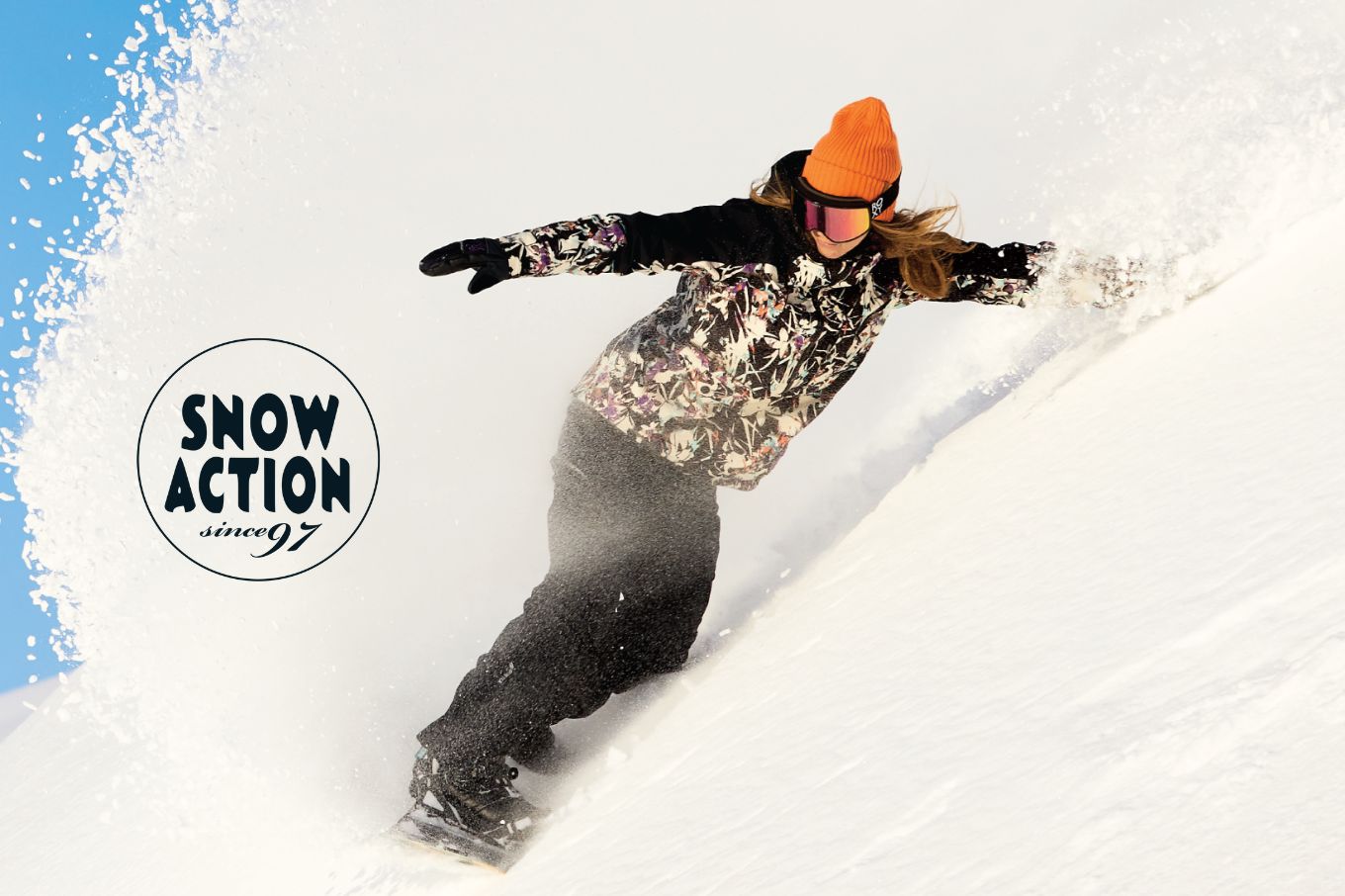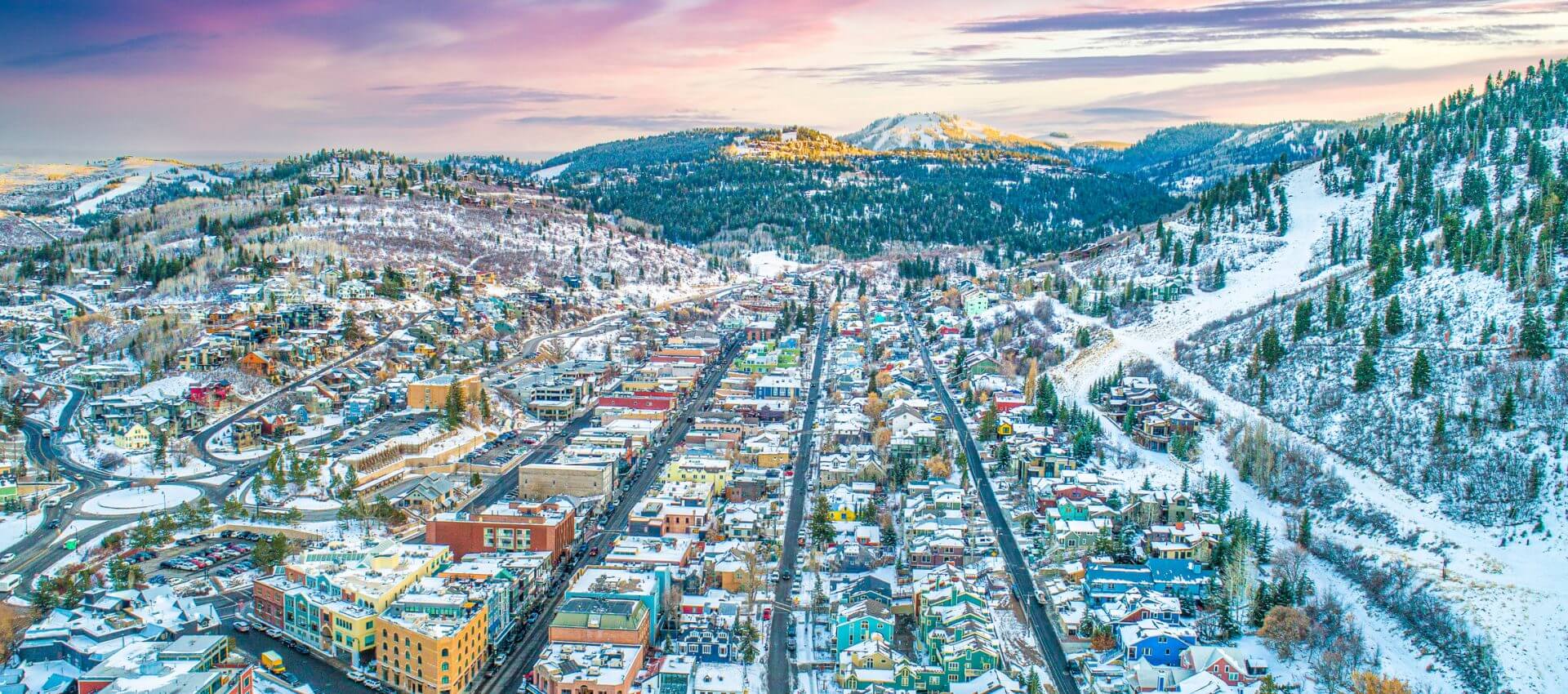Avalanche awareness and training is essential for accessing the goods in lots of places we normally love to go overseas – Japan, Canada, Europe, America etc. So getting some skills and training from qualified experts before you start going those places again makes a lot of sense.
But as more and more people get into the Aussie back and side country the need for local skills is getting more urgent.
Endless social media hyping it up, often sponsored by gear companies with slick productions featuring professional riders whose talents are far beyond those of Joe and Joelene Average make it look so cool, and not so hard.
Snow Action sat down with Dave Herring from Alpine Access, Australia’s premier Avalanche course training providers, for the hype free lowdown on who, why and what is involved here. They offer courses in NSW and out of Hotham this year, with set dates that generally book out and the option to organise private courses for groups of 4 or more participants – which are a really great idea for like-minded mates who plan to do trips together.
Dave was supposed to be taking it easy after his first vaccine shot the day before our chat – so easy he had a big cut on his nose from getting smashed by his fin ducking under a wave in the big surf hitting the South Coast. Give me extreme skiing over big waves any day – on snow you can always stop and think about it. Except when it gives way underneath or above you..
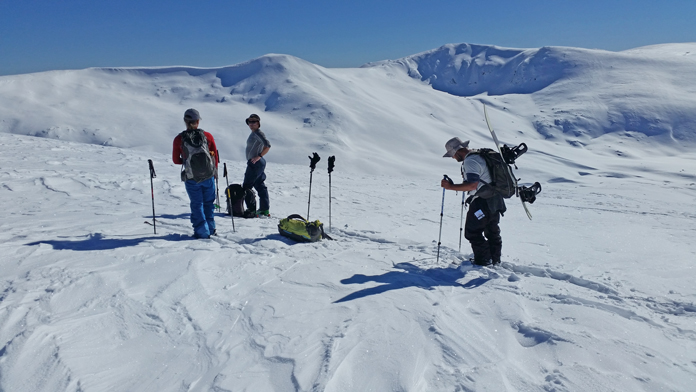
Dave for anyone tossing up whether to do a course, it’s not just all about avalanches is it?
No. Especially for us. Our courses go way beyond the curriculum [the Avalanche Canada curriculum that is, recognised as the leading avi training option in the English speaking World taught under licences in many places]. We teach people about gear and etiquette and a lof of safety stuff.
The culture has really changed in Australia since we started. When we started we used to get a bit of grief from people that “oh there are no avalanches in Australia”, but they were all going out on pattern based skis to ski on the plateau and just cruising around.
Now everyone’s going out on hitec gear climbing mountains trying to find the steepest thing they can get on to have a ski or slide on. So it’s really changed the dynamic of what goes on. That’s why we’ve sold out nearly every year.
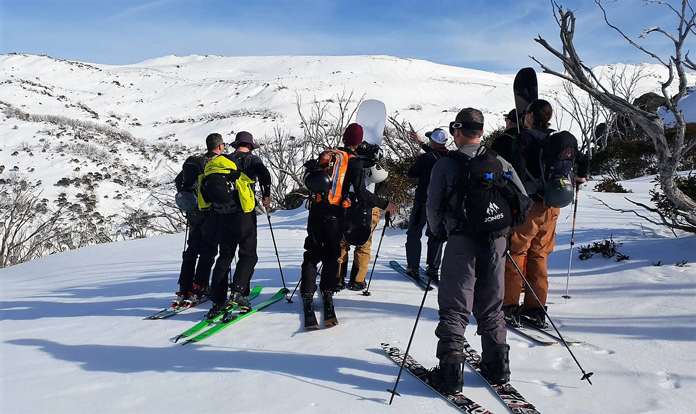
Plus obviously people going to Japan, NZ, Canada etc as well but the boom to Japan has put avi awareness on the radar for lots of people.
Absolutely. If you’re going overseas and you’re going out the gates anywhere you’ve go to have the avi pack. It distresses me in Japan [the Herrings have a house near Niseko and normally do seasons there too] to see so many people thinking it’s OK to go out the gates and drop the bowls that have no idea.
We cop it all the time. Because we get followed, we know it so well. People are always following our tracks. Then I turn around and there’s a young Aussie behind me without a backpack on and I go “What are you doing mate?” And I can see in their eyes, they’re freaking out. “How do I get back in the resort?”.
You can die so close, in a gully a couple of metres off a trail up there.
For sure. The saving grace is the stuff that’s reasonably accessible to people gets skied a lot, so the layers of the snow get chopped up, so that keeps it relatively safer. But you get a big snowfall, which can happen pretty regularly in Japan, in new snow you’ve really go to watch out for and the storm cycles.
You can get buried in a gully in an instant, you can be 3 metres deep, you start breathing it in, you can’t dig out of it.
What we’ve really noticed is a step up from the Aussies in getting educated. It’s a real thing now.
They understand that if they turn up to a trail head in North America or Japan and want to go touring if they haven’t done their AST 1 they’re probably not going to meet people to go out with because people are demanding that training behind them to go out.
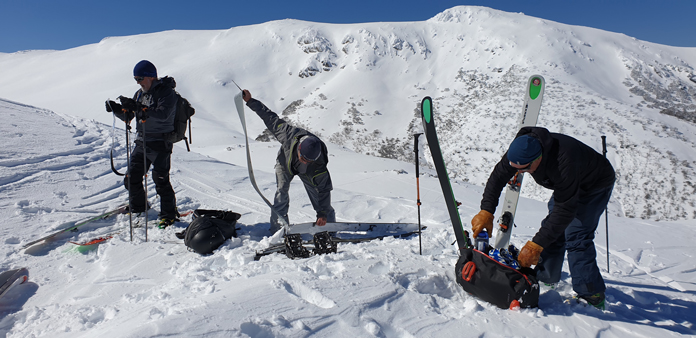
The corollary of it is that having all the gear – airbags being the classic example now – is not a safety blanket. It’s just a start. A little knowledge is a dangerous thing.
Absolutely right. There’s so much more to it than just gear.
The whole human factor in groups. I quote this stat from Utah Avalanche Centre, they now reckon up to 90% of incidents in the backcountry are from human factors. Because people go out there and there’s pressure to jump into a steeper line, or someone doesn’t feel like they can put their hand up and stop something they don’t like when people don’t talk about it.
There’s an acronym called FACETS which runs through all these things how human factors work. Stuff like following other people’s tracks. Thinking because you’ve gone so far out you deserve to ski a line without analyzing it. Group dynamics. People showing off, especially boys just being over the top.
Lots of professionals die out there too, lets get that right. It’s not just the amateurs, they’re probably scared of most stuff.
The snow science is just fascinating. Once you get into it and start looking, follow the weather, watching the wind, how much snow has fallen, from what direction, what slopes are safe and what aren’t, what angle are they. All these other things. It’s a fascinating thing. Once people get engaged in the course they’re in it for life.
You can never stop learning.
Exactly. You never stop learning.

For Aussie conditions, I was looking up records for how April snow turned out for the season a few weeks back going through 70 years of snow depth charts what stood out is how every season – even the worst – boils down to two or three weeks, sometimes it’s only one week, when there’s a decent snowfall, anywhere between 50cm and 1 and a half to 2 metres. Of course those weeks are when our backcountry is going to go as dangerous as anywhere.
Yes. What we are seeing is traditionally we got 20 or 30cm quite regularly through the season, and now with climate change we’re getting larger storms maybe twice, sometimes three times a year that can come in anytime.
Like in 2019, we had a whole lot of east coast lows with moist snow and the Main Range just froze solid for a couple of weeks. It was insanely bad out there. Then we had a massive cold front out of the north west with wind and it dropped a metre of snow in 48 hours.
One of our clients went out to ride a slope on a lee slope on Etheridge ridge from Thredbo. He rode down the slope at 10 o’clock no problem. Then they went off and did something else. Then on the way back he started climbing up at 12 o’clock to ride his line again. His wife was tired, so she waited.
As he was climbing up the whole thing let go, because in that time the solar had been on it, it had gained weight, and it was so sensitive with all this new snow sitting on an old frozen snow pack. Although this guy had just done a course, and thought he was good because he just ridden it, there’s the human factor right there. Complacency. And familiarity.
He was walking up a ridge at one end of this bowl, his wife’s 500m away. He’s just heard this almighty crack, the whole thing let go. It dragged him under and buried him. He’s bounced across the rocks with his snowboard on his back. It ripped all the bindings of his board and broke his board. So if he didn’t have that on his back he would have probably broken his back.
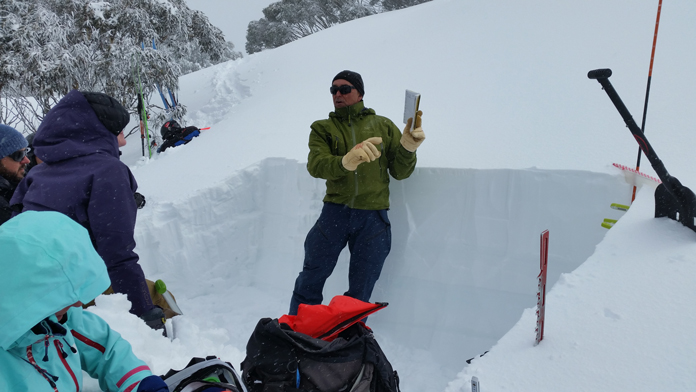
He was hiking up, wow if he had dropped in he would have been dead for sure.
How he survived I don’t know.
He bounced down off the rocks, and then somehow just happened to land with his head and one arm out of the snow. He’s cemented in. The chunks of snow around him were as big as kombi vans. But he’s got his hand into his pack and got his shovel out and started to dig himself out.
Meanwhile his wife’s on the phone. She has done the training as well. She’s got her beacon out and gone to search, and rung triple 0. She charges up the hill, thinking he’s probably dead or buried, then she comes over a rise and sees him there, stuck but digging away.
He’s got to the point where he knows he’s not going to die, he’s got a broken ankle, and he’s even got his phone out of his pack to film himself as he digs out.
So he dragged himself out. They sent a skidoo out from Thredbo and picked him up. They put him on the chair down and took to the medical centre, put his ankle in a moon boot and let him go. And he drove home!
Buy a few lottery tickets while you’re on a roll!
Yes, they were shattered. It’s a fascinating story, shows what can happen in an instant.
People sure need to be more cautious.
Yes. It’s mainly a male thing, I’ve got a real thing about the social media stuff. It’s the same in the surf with big waves. They’re athletes, they’re trained, doing it all their lives.
There’s not many guys that can ride a spine and get away with it. We only ever see the good shots, not the avis and the fails, we don’t see crew around them to keep them safe.
I like what people do, and you can’t deny them if they’ve got the skills.
But sometimes I think there should a little bit of hold back on making people think they can go out to the Western Faces and ski Watson’s Crags or the Sentinel and get away with it.
Because if they mess up they’re going to really ruin some people’s day. All the rescuers. If you dial triple 0 from the Sentinel where’s the helicopter going to come from? Canberra. It’s at least 2 hours away. Or if it’s too windy to take off, or what if there’s no visibility?
You’ve just got to be so prepared in what you do. The step up from going to Guthega and skiing Guthega Trig compared to thinking you can go out doing these more ski mountaineering type of events is massive.
Personally I work really hard making people understand what they are getting themselves into. And their responosbilities. Because if it’s not life threatening you really have to self rescue and have a plan to get people out. And a back up.
I’ve got a sled in my car, with a full pack, big pack, full of safety gear and ropes and oxygen. Everything you might need to rescue somebody. I’ve only had to use it once. If I have a problem I send a message to my wife Pete (*wife and fellow guide Pieta Herring) or a couple of mates and they can go to my car and get the gear and come out to us.
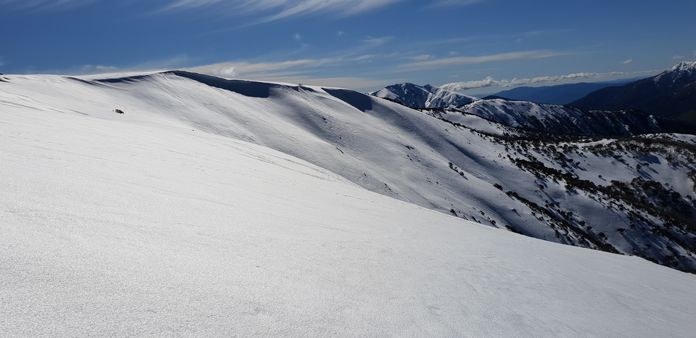
That’s as far as the tours and courses you organise. Because there’s a lot of people running tours out there now, or just taking mates with themselves as group leaders.
Yes and it’s unregulated in Australia. As instructors for Avalanche Canada we try and bring a professional approach to all the guiding we do.
You’re running out of Hotham now too?
We run out of Hotham and now Falls Creek approached us and invited us in there, so we’ve got a really buzzing little business.
With the dangers, we never used to think anything of it. I remember 30 years ago for a Canberra Times story heading out to Leather Barrel on telemark skis – I couldn’t tele to save my life, but it was with the new plastic boots so that didn’t matter. But we never thought of getting into trouble, or avalanches. Just be cautious and 99 out of a 100 you’ll be okay was our attitude. And that was before phones, so if we had of got into trouble we would have been a bit stuffed.
There’s an old saying allow 24 – 48 hours for the storm. Before we had all this information available people didn’t go out and ski fresh snow as it happened. But now if you dont go you miss out. Once again it’s a social media thing, a human factor about getting out there while it’s happening
These days every approaching centimetre has the shit hyped out of it long before it ever arrives on social media. Then if it turns to rain social media goes dead.
One of the biggest problems is getting the reports out there. Thats why Mountain Safety Collective was set up to provide professional condition reports and avalanche forecasting to a World’s best standard.
Locally have you got a few danger zones you notice more people are going now – like obviously Blue Lake cornice is a no brainer, or as you said like the Sentinel?
Yes, Western Faces are a massive step up. Just in angle and aspect. In training we always talk about the ‘three As’, being altitude, angle and aspect. You’ve got to take all those into account when you look at a slope and decide if you’re going to ski it. There’s not a lot of terrain that’s over 25-30°. As soon as you get into that that’s where you got to step up and have your wits about you.
Those chutes. I guess Carruthers chutes, down to Club Lake. Because they face south they stay cold. I’ve never seen them slide. You’ve just got to wait for them to unfreeze and get to that as they soften and out of there before it freezes over again.
The old race track on Northcote, it faces north so it gets the sun on it. That’s where the big avi was that took out Kunama Hutte years ago. It actually came off the edge of it, off Clarke, not the main face.
There’s a couple of zones off Tate where you get that convexity. If you can’t see the line you’re going to ski you’re in trouble, it’s a real red flag. People see these fantastic looking slopes and really don’t add up the dangers. That tension, I call it on the outside of a beach ball. All that weight is pulling down the hill. You come along and jump in and it can’t hang on anymore (see Hotham shot below).
Your best bet is take the ridgeline around.
Yes just take the long way round.
What about at Hotham?
Hotham’s got a lot more avi terrain. It’s all short into gullies, terrain traps, Hotham has a lot of traps for the unwary. We are always really careful there. Bill Barker (Hotham Ski Patrol chief in our winter and guide to Kashmir and Antarctica over our summer normally) does a great job managing safety there, and putting out a daily report. Always check with their local condition updates. [For more on the work Bill and the team do at Hotham check our feature from him about the 2017 season which saw some serious slides like the one below.]
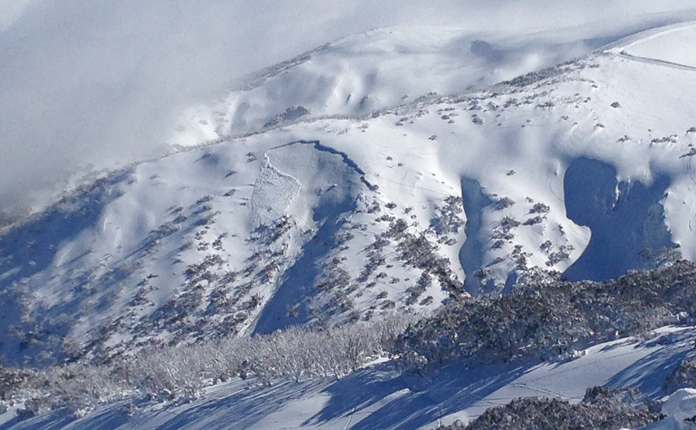
In the courses you have some pretty horrendous examples to really focus people’s attention.
I show some shocking videos in my presentation. There’s one at Wolf Creek where this group go out of the trees into an open field. It looks like it’s 30° – 35° or so. They come out of the trees and there’s trees at the bottom, so there’s this massive terrain trap. You can count the lines. 7 people go down. Then the 8th person comes out and triggers the whole thing.
Where were the others, at the bottom?
So where were the other people exactly, that’s what I put to my class. It’s stopping in safe spots. There’s so much to it that people have to get their head around. But it’s not that hard either.
The avalanche component of the curriculum is all of this, but we try and give people a lot of other useful stuff.
What are most people looking for from Alpine Access programs?
We realised a long time ago our client base is really people who are trying to get information and find their way into the backcountry. A lot of them don’t even know where to park the car. So we do a lot with first timers to get them going.
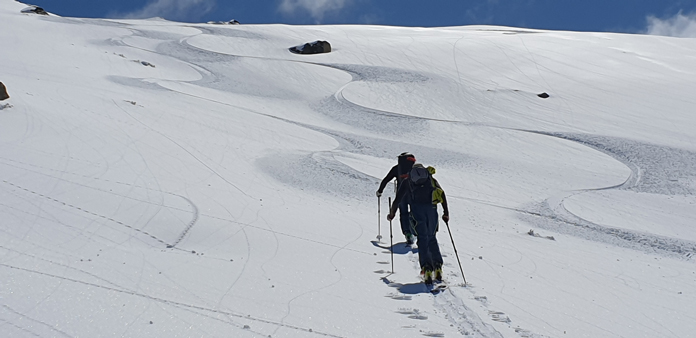
People who don’t even have 2 days to do an avi course can still do day tours and learn stuff
For sure.
Though I do have this theory a lot of the people who go into the backcountry for the first time never go back.
People have this fantasy about it.
Tell me about it. The effort to get those few turns, the good bit you see on social media. Then the haul back. Coming out of Twin Humps kills me.
We laugh. It is true. But if you are part of the others who do go back, it does get addictive. So do yourself a favour, sign up for an AST 1 course. Travel bans won’t last forever either – avalanche happens inbounds in many places in Japan, as most of us now, but also all over – including at home in Australia – never mind out the gates.
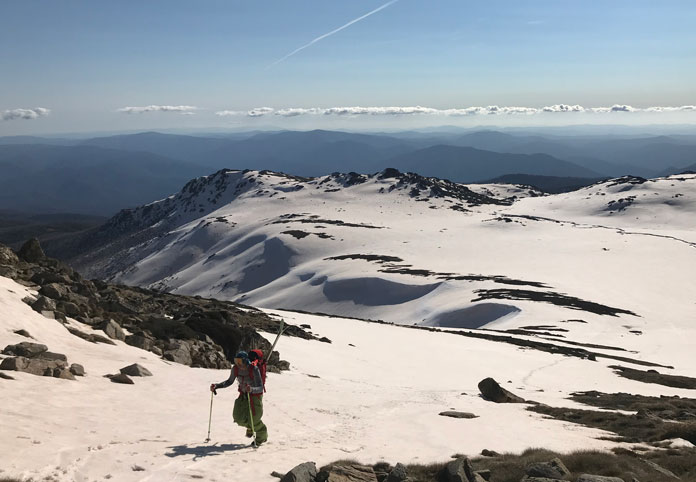
Alpine Access set dates for 2021 are:
AST 1 course cost $320 per person. Book soon – many dates are already full, especially for Hotham weekends. They can customise tours for 4 or more clients for weekday course at the same $320 per person rate
NSW
July 10-11, July 17-18, July 24-25, July 31-Aug 1 Course full-Waitlist, Aug 7-8
Hotham & Falls Creek
Hotham/Dinner Plain July 19-20, Hotham/DP July 24-25 Course Full-Waitlist, Hotham/Dinner Plain Aug 7-8 Course Full-Waitlist, Hotham/Harrietville Aug 14-15 Course Full-Waitlist, Falls Creek Aug 17-18
What gear do you need for an Avalanche course?
Avalanche transceiver, Shovel, Probe (we can assist with these)
Backpack (>30L)
Water
Snacks & lunch
Sunglasses, sunhat, sunscreen
Beanie or helmet, gloves, goggles
Warm layers (not cotton)
Waterproof outerwear
Skiers: Skis with touring bindings & skins, poles
Snowboarders: Snowboard & snowshoes OR splitboard setup, 3 piece poles
For bookings, info and heaps more useful stuff check their website soon
